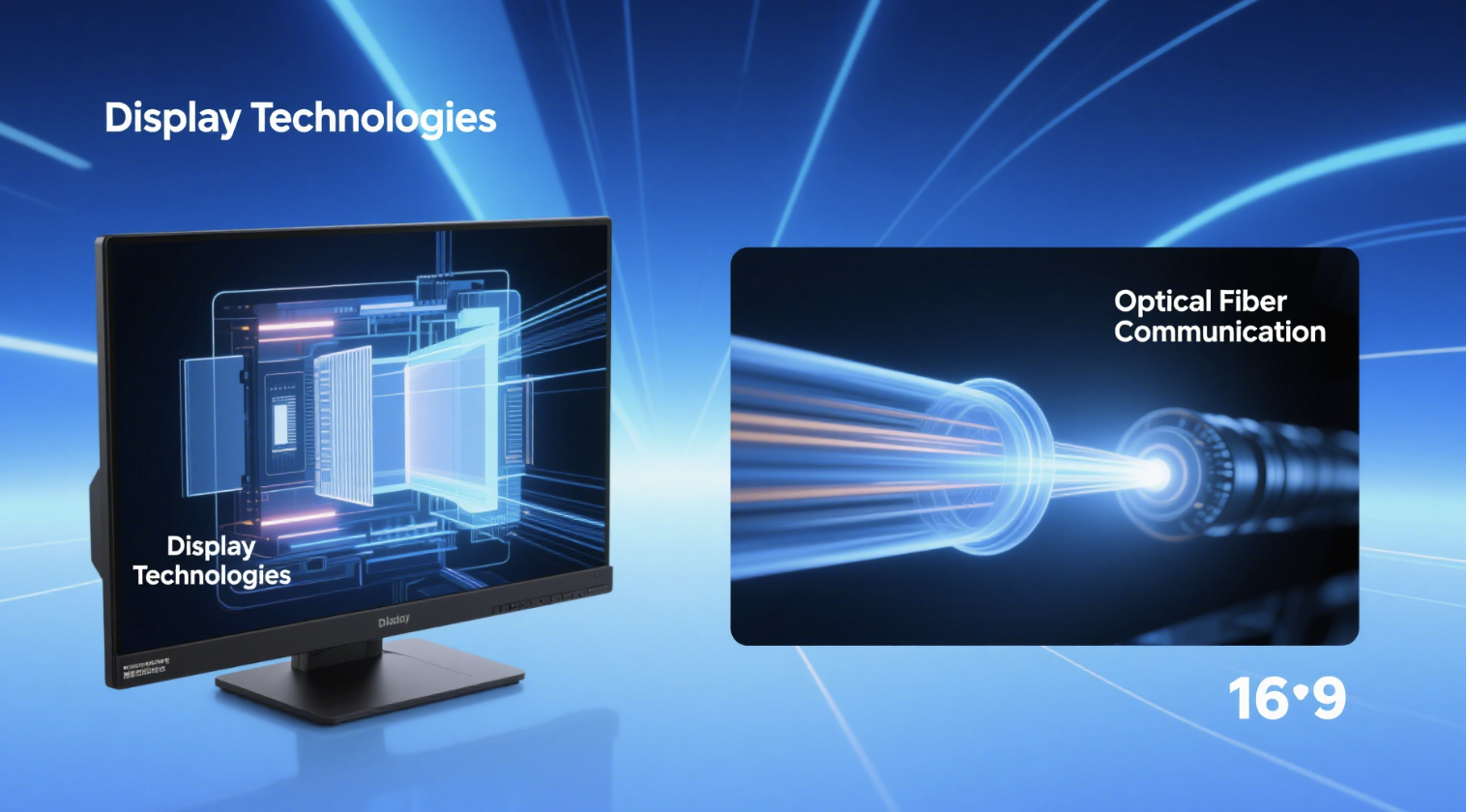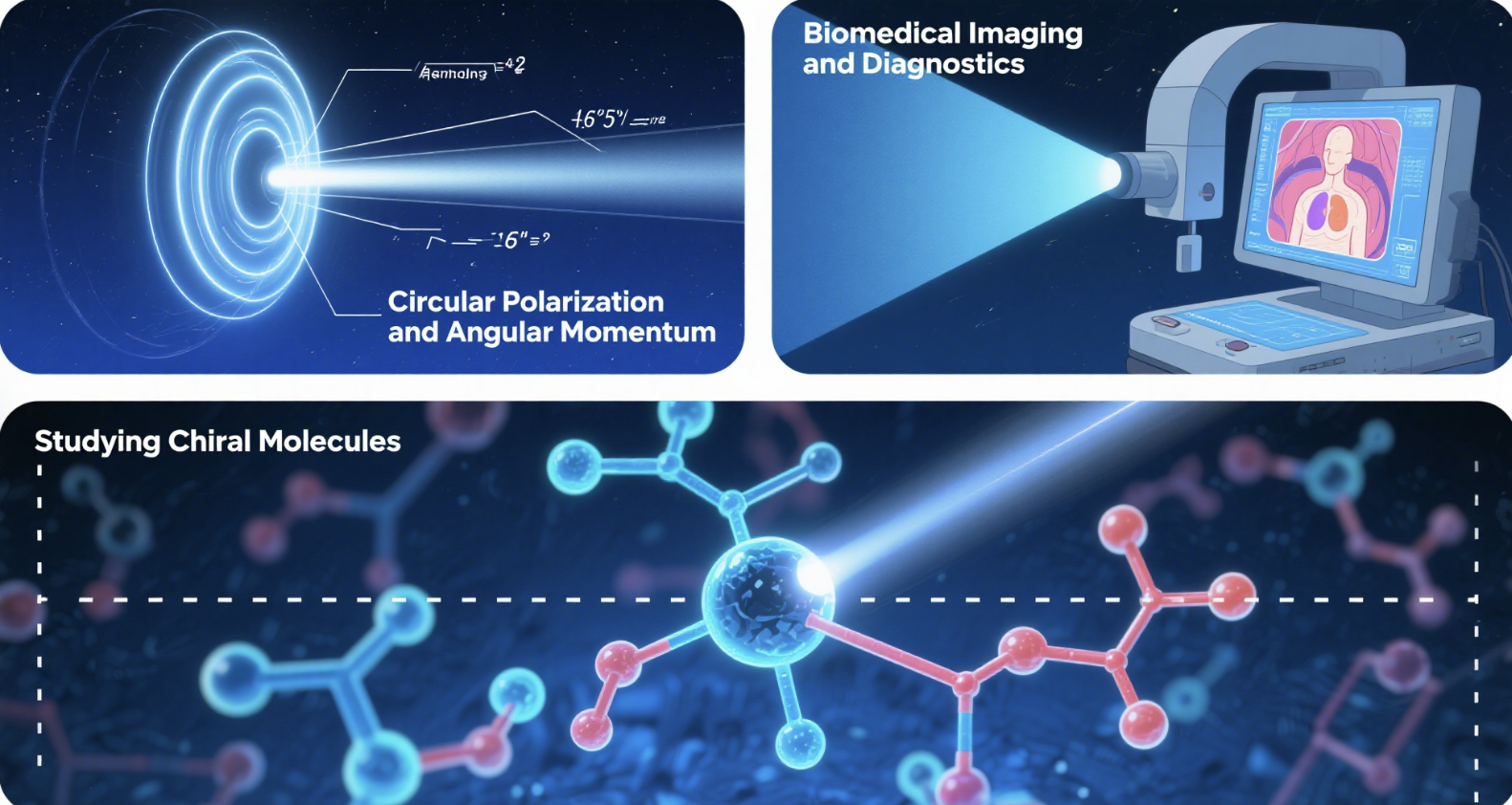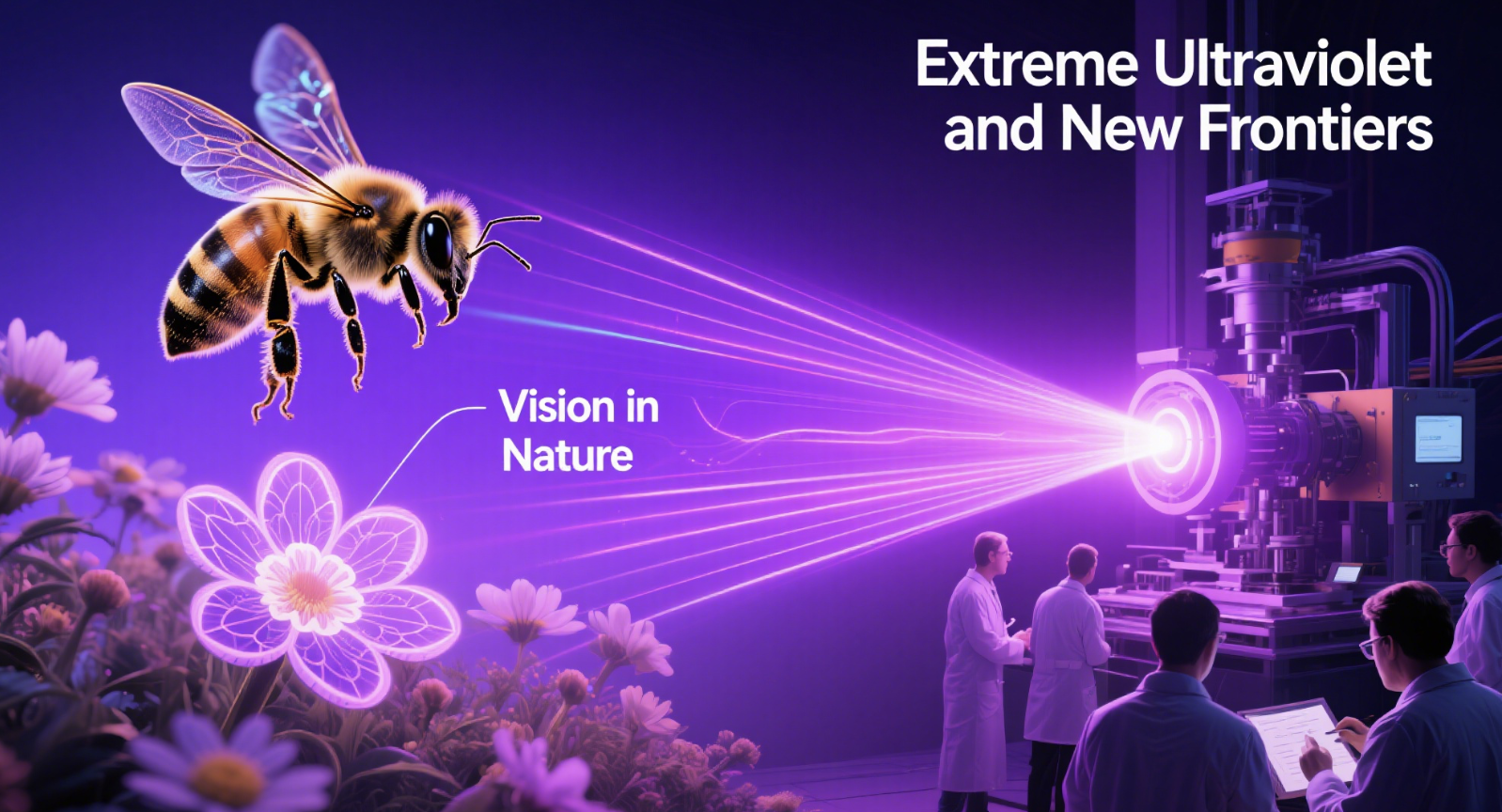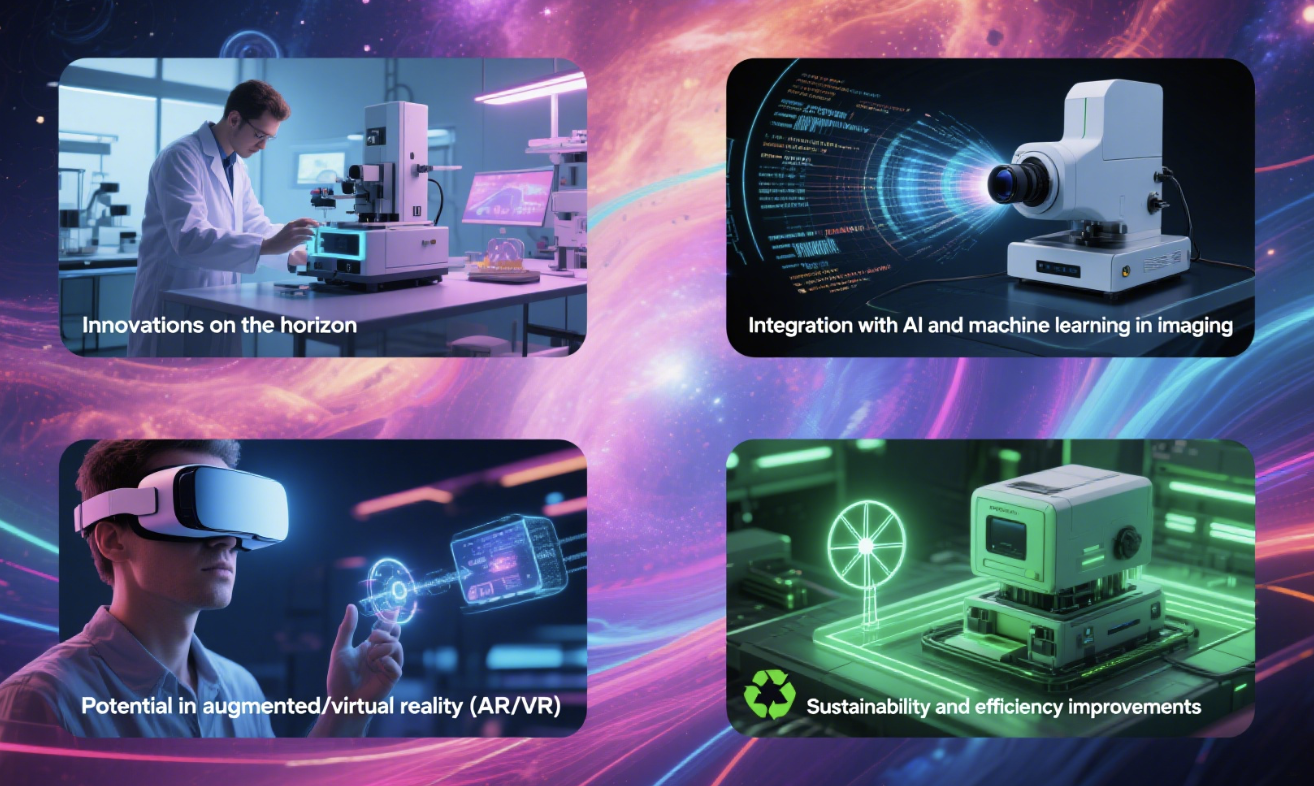close
Choose Your Site
Global
Social Media
Views: 989 Author: Site Editor Publish Time: 2025-05-19 Origin: Site




Optical polarization plays a powerful role in how we see, communicate, and interact with modern technology. From polarized sunglasses to fiber-optic networks, it's everywhere—often without us realizing it. In this blog, we’ll explore the applications of optical polarization across science, medicine, communication, and daily life. Curious about how polarized light improves display clarity or enables quantum computing? Keep reading—this guide simplifies complex topics so anyone can understand the uses of optical polarization in the world around us.
Optical polarization happens when those light waves start to line up.Instead of bouncing every which way, they move in just one direction.
Light gets polarized in a few different ways:
●eflectionoff smooth surfaces (like water or glass)
●assing throughspecial filters called polarizers
●catteringin the sky—yes, the sky polarizes light too

Polarization isn’t just a science trick—it powers real tech. We use it in: Smartphone displays 3D movie glasses Fiber-optic internet Satellite signals Biomedical imaging
Without it, your screen wouldn’t look sharp.Your sunglasses wouldn’t block glare.Your internet will be slower and less reliable.
Here’s how polarized sunglasses work: sunlight reflects off surfaces like water, pavement, or glass. That reflection causes horizontal polarization, which creates intense, blinding glare. Instead of just dimming the light like regular sunglasses, polarized lenses use a thin chemical film. This film acts like a filter, cutting out the blinding rays while letting useful light through.
Let’s break it down:
| Feature | Regular Sunglasses | Polarized Sunglasses |
|---|---|---|
| Glare reduction | Minimal | Excellent (blocks horizontal glare) |
| Light filtering method | Dark tint | Polarizing filter |
| Best for | Everyday use | Driving, fishing, snow, water sports |
| Clarity in bright conditions | Moderate | High |
| Eye strain protection | Basic | Strong |
They’re especially popular among drivers, boaters, skiers—anyone facing reflective surfaces. Some even say it feels like “removing a glare blanket” from your eyes.
Human vision isn’t naturally good at handling reflected polarized light. It causes eye fatigue, strain, even discomfort in high-glare environments. This is where specialized eyewear steps in.Think ski goggles, performance sunglasses, or anti-glare driving lenses. They use polarization to cut glare, relax your eyes, and improve contrast.
Here’s what specialized eyewear can help with:
Reduce squinting in bright light
Improve contrast in snow, water, or road scenes
Prevent long-term eye fatigue
Enhance visual performance during high-speed activities
So next time your eyes feel tired outside, it might not be the brightness—it might be the polarization.
Polarization technology is essential for clear and colorful screens.
LCDs (Liquid Crystal Displays) rely on it to control light at every pixel. Liquid crystals rotate polarized light when electric fields change. That’s how they show different colors, shapes, even brightness.
OLEDs (Organic Light Emitting Diodes) use polarization differently. These displays often include polarizers to manage reflections and improve contrast, especially under sunlight.
Optical fiber communication uses light to transmit data through thin glass fibers. It's super fast and reliable, making it perfect for internet and phone services. If its polarization changes randomly, the signal gets distorted.
Instead of vibrating in just one direction, circularly polarized light spins as it moves. It can rotate clockwise (right-handed) or counterclockwise (left-handed). This rotation gives light something special: optical angular momentum (OAM).That spinning motion isn't just pretty. It's powerful.
Applications of circular polarization and angular momentum:
Tiny beams grab microscopic particles—like cells or DNA. Circular polarization helps rotate, trap, or move these particles using light's angular momentum.
In quantum labs, circularly polarized photons carry quantum bits. They get entangled. They store information. This helps build:
Quantum computers
Super-secure communication systems
Advanced sensors
Doctors are using polarized light to see deeper, clearer, and more accurately into the body.Elliptical and circular polarization play big roles here. They’re used to cancel out light scatter and noise—making images more focused on the right tissue layer.
In depth-resolved imaging, polarization lets you:
Block surface reflections
Probe specific tissue depths
Highlight problem areas like lesions or tumors
It’s especially useful in areas like skin cancer detection, eye exams, and non-invasive internal imaging.
Chiral molecules are mirror twins. That tiny difference matters a lot in chemistry, biology, and especially pharmaceuticals.
Some drugs have two chiral forms. One might heal. The other could harm.To tell them apart, scientists use circular dichroism spectroscopy. It shines right- and left-circularly polarized light through a sample. If the molecule absorbs one more than the other, it reveals its "handedness."
Applications include:
Drug testing and purification
Protein folding studies
Genetic structure analysis

Humans can’t see polarized light—but some animals can. Cuttlefish, ants, bees, mantis shrimp, and other species evolved to detect polarized light naturally. It’s like a built-in secret vision system. They use it to:
Navigate using the sky’s polarization pattern
Find water or shiny surfaces
Spot predators or hidden prey
Send visual signals invisible to enemies
Cuttlefish, for example, send polarized signals during mating. Bees use skylight polarization to locate flowers and navigate home—even when clouds block the sun.
This ability didn’t just happen. It evolved to solve real-world survival problems. These creatures don’t wear shades—but their eyes work like built-in polarization detectors.
Let’s talk extremes—extreme ultraviolet light (EUV). It’s way beyond the visible spectrum. And researchers are learning how to control polarization in this tricky range. EUV is so hard to handle. Because glass, mirrors, even air—most things we use—don’t behave well with EUV light. It gets absorbed, scattered, or twisted. But scientists are building special mirrors, polarizers, and beam-shaping tools to work in this range.
It opens new doors in:
Nanophotonics – where light interacts with structures smaller than a virus
Advanced spectroscopy – identifying atoms, molecules, or defects at the tiniest scale

Optical polarization isn’t slowing down—it’s evolving fast. Researchers are building next-gen polarization systems that operate in new wavelengths like extreme ultraviolet (EUV) and terahertz. These allow us to explore structures smaller than viruses. New materials like metasurfaces and nano-engineered films offer ultra-thin ways to control light’s polarization. Unlike bulky filters, these can sit flat on chips or glass.
Imagine paper-thin lenses that steer light with precision.
| Innovation Area | What’s Being Developed | Real-World Impact |
|---|---|---|
| EUV optics | Advanced polarizers, mirrors | Semiconductor, quantum imaging |
| Metasurfaces | Ultra-thin light control layers | Miniaturized optical devices |
| Compact polarization tech | Integrated polarimetric systems | Smaller, smarter sensors |
AI and machine learning aren’t just for chatbots—they’re transforming polarimetric imaging too. By feeding polarization data into algorithms, we can train AI to:
Detect patterns invisible to the naked eye
Enhance low-light or foggy visuals
Identify materials or surfaces based on how they scatter light
In medical diagnostics, AI + polarized imaging helps spot tiny tumors or inflammation earlier than traditional methods. In autonomous vehicles, smart sensors use polarization to see through glare, dust, and rain—things normal cameras struggle with.
| Use Case | What AI Does with Polarized Data | Why It Matters |
|---|---|---|
| Medical diagnostics | Identifies hidden tissue irregularities | Earlier, more accurate results |
| Security and forensics | Detects altered or forged materials | Improves investigation accuracy |
| Driverless cars | Enhances visibility in bad conditions | Safer navigation, fewer errors |
AR and VR rely on light behaving perfectly. Polarization can help make that happen. In AR glasses, polarization improves image clarity by cutting reflections from the lens or display. In VR headsets, it boosts depth and reduces motion blur. Some companies are exploring dynamic polarization filters that adapt based on what you see. This creates smoother transitions, better contrast, and less strain on your eyes.
Better visuals, better immersion.
| AR/VR Component | Role of Polarization | User Experience Benefit |
|---|---|---|
| Lenses | Reduces glare, enhances clarity | Cleaner view of digital content |
| Headset optics | Controls light path and depth | More realistic 3D environments |
| Adaptive filters | Changes polarization in real time | Less eye fatigue, sharper contrast |
Polarization tech is going green—and smart. Engineers are designing filters and coatings that use fewer materials and waste less light. That boosts energy efficiency for everything from solar panels to low-power displays. Some next-gen LCDs now recycle polarized light instead of absorbing it. That alone can save up to 50% of energy lost in traditional screens. In solar energy, polarization helps align light to boost photon absorption—translating to higher electricity output without changing the panel’s shape or size.
| Area | How Polarization Helps | Eco or Energy Benefit |
|---|---|---|
| Display tech | Recycles polarized light | Lower power consumption |
| Solar panels | Enhances light capture | Higher energy efficiency |
| Coatings/films | Requires fewer raw materials | Reduced waste, longer lifespan |
Polarization is no longer just about light control—it’s part of the sustainability game now.
A: No. Polarization affects radio waves, infrared, and extreme ultraviolet (EUV). It’s crucial in satellite communication, fiber optics, and advanced spectroscopy, far beyond just visible light.
A: Not directly. Humans can’t detect polarization like some animals. However, it influences our visual comfort, especially glare. Special lenses help manage it for clearer vision.
A: Circular polarization resists signal loss from antenna rotation or misalignment. It ensures stronger, more stable connections between moving satellites and Earth receivers.
A: 3D glasses filter light using opposite polarizations for each eye. Each lens allows only one polarized image, and the brain combines them to create a 3D depth effect.
A: Yes. Devices use elliptical or circular polarization in biomedical imaging to scan tissue layers, reduce glare, and detect issues like tumors without invasive procedures.
As you’ve seen, light isn’t just something we see—it’s something we can shape, control, and use in surprisingly powerful ways. From enhancing vision in animals to driving breakthroughs in EUV imaging and quantum tech, optical polarization is doing serious work behind the scenes.
At Band Optics Co., Ltd., we help turn these advanced optical principles into real-world solutions. Whether you're developing smart displays, biomedical devices, or next-gen sensors, our polarization components are engineered to elevate performance. Let’s build the future—together, and with precision.
content is empty!